Spoliation Advisory Panel Newsletter- August 2024, No.18
Published 5 August 2024
Introduction by Gabriele Finaldi, Director of the National Gallery and Chair of the Spoliation Working Group of the National Museum Directors’ Council (NMDC)
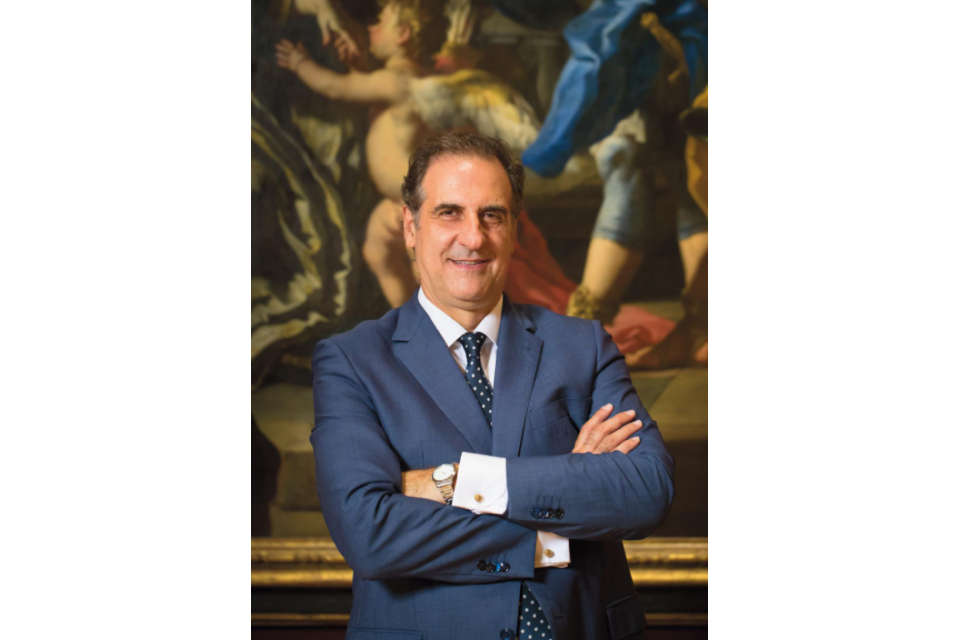
It was in September 2017 that the National Gallery, London, hosted together with the UK Department for Digital, Culture, Media and Sport (as it then was), the international conference 70 Years and Counting: the Final Opportunity?, sponsored by the Commission for Looted Art in Europe. It emerged very strongly at that event that only close cooperation between governments, museums, the art trade, academics and lawyers, could ensure that significant progress was made in righting the historical wrongs of Nazi spoliation of artworks. Information sharing is an integral part of this cooperation and the publication of the Newsletter of the Network of European Restitution Committees on Nazi-looted Art was is one of the concrete actions from the conference that were put into effect as a result.
In recent news, the Statement on Best Practices for the Washington Conference Principles that was issued on 5 March 2024 at the end of the international meeting convened by the US State Department and the World Jewish Restitution Organization (to which the UK government was a signatory) offers some helpful clarifications on terms such as ‘just and fair solutions’ for the victims of Nazi persecution; it encourages governments to promote provenance research and public museums (and private collections) to publish their inventories, and urges legislators to remove legal barriers to restitution, such as rules against deaccessioning and statutes of limitation.
Museums in the UK in spite of the financial pressures of the post-pandemic landscape and the increased public interest in issues relating to the repatriation of museum objects to source communities, have sought to maintain the impetus in provenance research and to promote innovative digital solutions to make collection information more accessible.
A series of seminars in different parts of the country are being held to provide curators, registrars and collection managers with the tools and know-how to pursue complex provenances and the new publication by Jacques Schuhmacher, Provenance Curator at the Victoria and Albert Museum, Nazi-Era Provenance of Museum Collections.
A Research Guide published this year provides an invaluable vademecum in this area. A new online Museum Data Service that integrates museum databases nationwide, supported by private and public funding, will make searching for works of art much simpler. It will be possible to locate objects that have an unknown provenance for the years 1933 to 1945 much more easily.
As a signal of renewed commitment by public collections, in 2023 a new Advisory Group on Spoliation Matters (AGSM), chaired by the former minister Lord Inglewood, was established to ‘review, scrutinise and advise’ museums in the UK on the implementation of the Washington Conference Principles. The AGSM will assist museums in public advocacy and it will also seek to raise funds for provenance research. Very importantly, it will connect museums to international debates on spoliation. Cooperation, collaboration and sharing of information nationally and internationally are absolutely key to progress.
News: France
Changes at the Commission for the Compensation of Victims of Spoliation (CIVS)
As we announced in our last Newsletter in December 2023, the reform of the policy for the restitution of cultural property looted in the context of anti-Semitic persecution between 1933 and 1945, introduced by the law of 22 July 2023 and its decree of 5 January 2024, finally came into force on 1 February 2024 (instead of 1 January as previously announced).
A brief chronology of the development of the CIVS’s authority
In 1999, the CIVS, then called the Commission pour l’indemnisation des victimes de spoliations intervenues du fait des législations antisémites en vigueur pendant l’Occupation (Commission for the Compensation of Victims of Spoliation Resulting from Anti-Semitic Legislation in Force during the Occupation), was set up to recommend, at the request of victims or their heirs, to the Prime Minister, measures to compensate for anti-Semitic spoliations committed in France between 1940 and 1944.
In 2018, the ways in which applications can be submitted to the CIVS were extended to enable it to proactively trace the owners, or their heirs, of cultural property looted in France between 1940 and 1944 under anti-Semitic legislation. However, the restitution of property in the public domain always came up against the principle of the inalienability of public collections (Loi du Patrimoine). A special law of 21 February 2022 was therefore necessary to allow the restitution of 15 paintings to the heirs of their owners who were victims of anti-Semitic spoliation.
The framework law of 22 July 2023 (see December 2023 Newsletter) now makes it possible to derogate from the principle of inalienability, after obtaining the opinion of the CIVS, in order to order the removal from the public domain of spoliated cultural property for its restitution to its rightful owners. This law stipulates that a decree in the Council of State must specify the rules relating to the competences, composition, organization and operation of the CIVS. This is the purpose of the decree of 5 January 2024, which also came into force on 1 February 2024.
A new designation: restitution is now an integral part of our missions
The CIVS, now called the Commission pour la restitution des biens et l’indemnisation des victimes de spoliations antisemites (Commission for the Restitution of Property and the Compensation of Victims of Anti-Semitic Spoliations), is now charged with three distinct missions:
- To recommend compensation for material and bank-related anti-Semitic spoliations that occurred in France between 1940 and 1944, exclusively on the basis of requests from victims or heirs;
- To recommend compensation for the anti-Semitic spoliations of cultural property which occurred in France between 1940 and 1944, at the request of any person concerned or on its own initiative (self tasking);
- To recommend the restitution of cultural property looted in the context of Nazi anti-Semitic persecution, including abroad, between 1933 and 1945, when this property is held in a public or similar collection.
Renewal of the CIVS advisory board
The CIVS reform, which came into force on 1 February, led to a major renewal of the composition of its advisory board by the Prime Minister. Five leading figures have joined the CIVS for a new three-year term, which runs until January 2027.
In the first instance, the current Chairman of the CIVS and Honorary Advisor to the Court of Cassation, Michel Jeannoutot, will remain as Chairman of the Commission. However, a new vice-chairman has been designated.
Christophe Devys has been appointed Vice-Chairman of the CIVS, in his capacity as Honorary Section Chairman of the Conseil d’Etat. Christophe Devys holds a doctorate in applied mathematics and graduated from the École normale supérieure de Cachan, Sciences Po Paris and the École nationale d’administration. His responsibilities at the head of public administrations and in the Prime Minister’s cabinet have focused on health and social policies. He also headed the cabinet of the Minister of Justice.
Alya Aglan is a professor of contemporary history at the University of Paris 1 Panthéon-Sorbonne and holds the “War, Politics and Societies in the 19th and 20th Centuries” chair. As part of the Mattéoli Mission (Study Mission on the Spoliation of Jews in France in 1997), she was commissioned to study the administrative mechanism of anti-Semitic spoliations under the Vichy regime. She has published numerous works, including La France à l’envers. La guerre de Vichy, in 2020.
Gilles Andréani is an honorary member of the Court of Auditors. He has held a variety of diplomatic posts, including at NATO and in ministerial cabinets. He has published numerous articles on diplomatic and military issues. Since 2023, he has also been Chairman of the Commission for Defence and National Security.
Charles-Edouard Bucher is an associate professor of private law and criminal sciences at the Law Faculty in Nantes and director of the Private Law Research Institute. He is director of the Institut de recherche en droit privé (Research Institute in Private Law), where he is also director of the University degree “Droit de l’art et de la culture” (Art and Culture Law Degree), and teaches a course entitled “Spoliations, provenance, restitutions”.
Sarah Gensburger is a political scientist and sociologist, and director of research for the CNRS at Sciences Po Paris. She is a historian specializing in the study of the spoliation of Jewish property in Paris, and has published a number of books, including À quoi sert les politiques de mémoire? What is the purpose of remembrance policies? in 2017, and Qui pose les questions mémorielles ? (Who asks the questions of remembrance? ) in 2023. Since 2019, she has been a member of the Commission Mémoire et Transmission (Commission on Remembrance and Transmission) of the Fondation pour la Mémoire de la Shoah.
Appointment of Frédérique Dreifuss-Netter as President of the CIVS
On the 24 June 2024, Ms. Frédérique Dreifuss-Netter, Honorary Advisor to the Court of Cassation, was appointed by decree President of the Commission for the Restitution of Property and Compensation for Victims of Anti-Semitic Spoliation (CIVS), replacing Mr. Michel Jeannoutot. She will assume her duties on the 1 July 2024.
The CIVS is an administrative commission responsible for proposing measures of reparation, restitution, or compensation to the Prime Minister for damages resulting from anti-Semitic spoliation that occurred in France between 1940 and 1944. It also examines the spoliation of cultural property between 1933 and 1945, including the cultural property spoliated outside of its territory but currently located in France in public or affiliated collections.
Since 1999, more than 25,000 claims submitted by victims of anti-Semitic spoliation, or by their heirs, have been examined by the CIVS.
Ms. Frédérique Dreifuss-Netter is a tenured professor of law. She has been a member of the Court of Cassation since 2010 and has notably participated in the work of the National Consultative Ethics Committee for Life Sciences and Health and the Orientation Council of the Biomedicine Agency. She has been a member of the CIVS Deliberative College since 2017. On the 24 June 2024, she was appointed President by decree, replacing Mr. Michel Jeannoutot, Honorary Advisor to the Court of Cassation, who had held this role since September 2011.
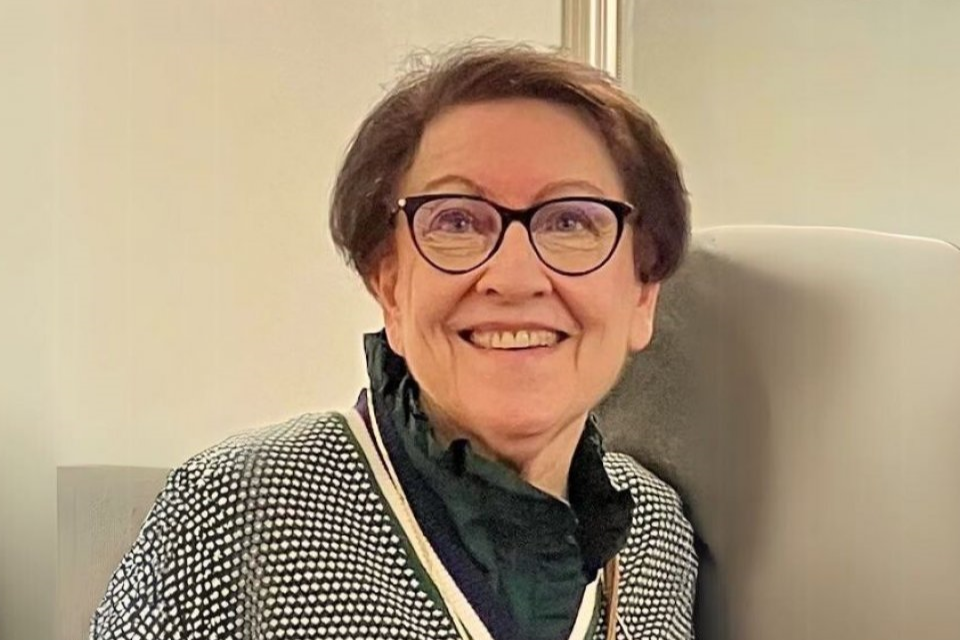
Ms. Frédérique Dreifuss-Netter, newly appointed President of the Commission for the Restitution of Property and Compensation for Victims of Anti-Semitic Spoliation (CIVS)
News: Austria
The unheard things – another kind of provenance research. An interdisciplinary contribution to the Capital of Culture Year 2024
In 2024, the Salzkammergut in Austria will be the European Capital of Culture. This is the first time it has been held in the inner-Alpine region. 23 municipalities around the banner city of Bad Ischl are organising this major event, which also aims to stimulate critical discussions and create space for reflection. As part of Salzkammergut 2024, a project that is dedicated to the topic of looted objects and thus also questions of provenance and restitution is taking place: The unheard things – another kind of provenance research is an interdisciplinary collaboration between the Theater im Bahnhof (TiB) in Graz and the two academics Monika Löscher and Birgit Johler.
What happened to…? Starting points of the project
The project specifically deals with “Aryanised” art and everyday objects formerly owned by Jews in Ausseerland, the Styrian part of the Salzkammergut. Starting from the end of the 19th century, many Jewish business families, artists and intellectuals came to the Salzkammergut, where the imperial family used to holiday. They rented rooms and houses and bought plots of land and villas. Many of them stayed there not only in the summer and maintained neighbourly or friendly relations with the local population. Many families had also converted, not least due to anti-Semitic tendencies that soon became apparent in the Salzkammergut. One example is Konrad Mautner (1880-1924), son of a Viennese textile manufacturer, folklorist and song and costume researcher of the Salzkammergut, who regularly spent time with his family at Grundlsee. During the First World War, he had his children baptised as Protestants and converted to the Protestant faith himself together with his wife Anna in 1919. There was also a Jewish population, who lived in the communities of the Salzkammergut all year round.
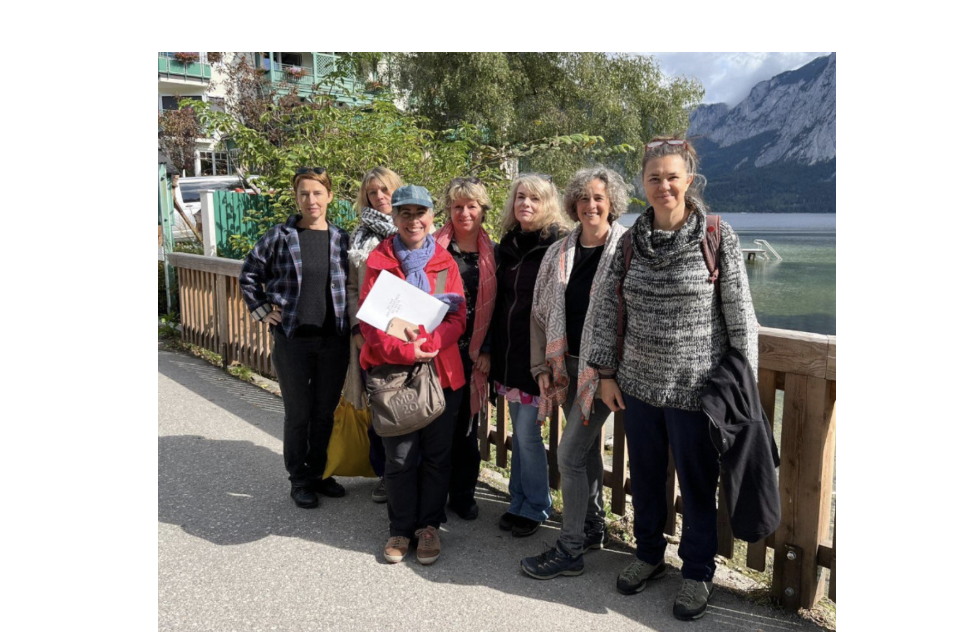
TiB Graz together with the two scholars during a research visit to Altaussee, September 2023. From left to right Birgit Johler, Johanna Hierzegger, Monika Löscher, Monika Klengel, Martina Zinner Juliette Eröd and Gabriela Hiti. ©TiB Graz
In the course of the annexation to Nazi Germany in March 1938, there were also “Aryanisations”, “confiscations” and “seizures” of assets by the NSDAP in the Salzkammergut. Numerous objects ended up in local museums, such as the “Heimathaus” founded in Bad Aussee in 1942. The party chronicle of the NSDAP stated: “It should be noted here that many particularly beautiful, if not the most beautiful pieces in the Heimathaus come from Jewish property in Altaussee.”However, it can also be assumed that objects ended up in private hands, sometimes via detours - for example via so-called “wild Aryanisations”, auctions or the art and antiques trade.
In Austria, thanks to the Art Restitution Act (1998), Nazi provenance research has been and continues to be carried out in collections owned by the Republic, where restitution is thus regulated. Corresponding laws and resolutions also exist at the provincial level, but not for regional museums, which are often run by the local authorities. At the local level, there is often a lack of awareness that looted objects could also be in museum collections or even private households.
The unheard things – another kind of provenance research
The project - a theatre performance in public space - focuses on objects from formerly private folklore collections, but also on everyday objects that we now know once belonged to people who spent their summer holidays in Ausseerland before 1938 or settled there completely and were later persecuted by the National Socialists as Jews. These include a farmer’s chest, a reverse glass painting, a pear jug and a mirror.
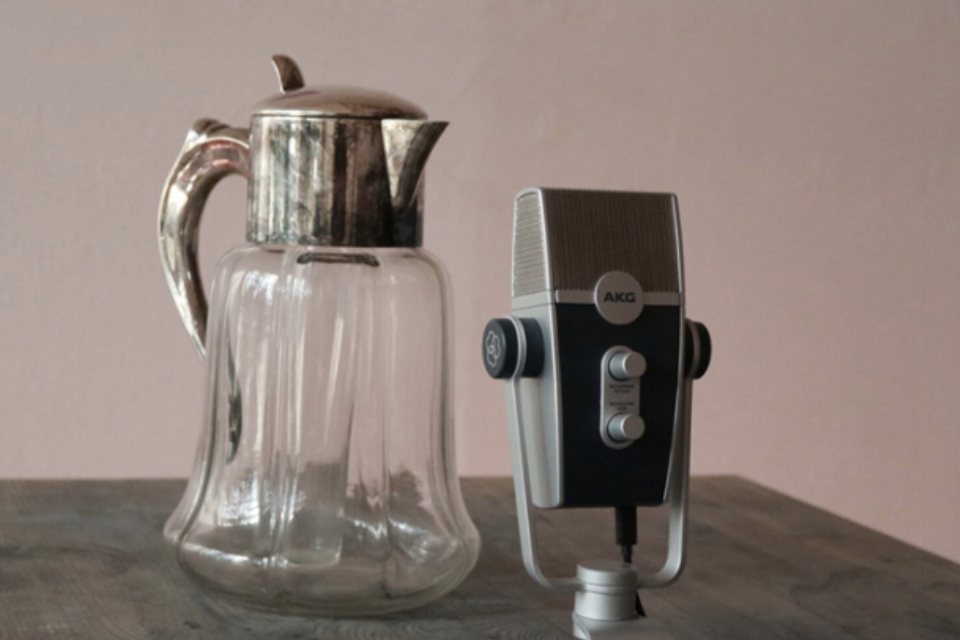
The unheard things – another kind of provenance research © Helene Thümmel
The project invites residents and visitors to the Salzkammergut to engage with the topics of Nazi looting, provenance and restitution, with questions of loss, value and remembrance, and perhaps also with decades of silence - in an unconventional way. The setting is a fictitious radio station that is set up during market hours at the weekly markets in Bad Aussee and Altaussee. On three weekends (in the summer of 2024), market visitors will experience a group of radio producers who seemingly create a live programme in the hustle and bustle of the weekly market that focuses on these very stories while also incorporating what is happening at the market.
The “entertainment programme” genre opens up a wide range of possibilities for conveying the topic in a certainly unconventional way: Interviews, request concerts, live music, contact with people at the market, appeals, competitions, or even interviews with experts and live guests, live broadcasts to the surrounding area, etc. This approach enables the project team to publicize the topic of looting, provenance and restitution in the region. It relies on the power of the personal narrative and makes the looted objects the protagonists. At the same time, the expertise of the two scholars provides the project with a solid foundation in terms of content.
For more information visit ‘The unheard things – another kind of provenance research’.
News: Germany
Reform of Germany’s Advisory Commission
Calls for the Advisory Commission to be reformed are as old as the Commission itself, (at least 20 years), and criticisms were raised from the outset, mainly focusing on the possibility of lodging unilateral requests for mediation (giving victims or their heirs the right to initiate proceedings before the Commission, even if the museums did not consent to such action being taken). To this day, victims and their descendants can only involve the Commission if the institution dedicated to the preservation of cultural assets agrees.
In the 21 years of its existence, the Advisory Commission has only issued decisions in 24 cases, yet in the Lost Art Database alone – where search requests and found-object reports relating to Nazi-looted art are published – there some 41,000 search entries and a further 30,000 found-object entries listing seized items of cultural property.
It is reasonable to assume that so few cases have gone before the Commission because at least some of the cultural institutions involved have refused to give their consent to proceedings being initiated. This certainly applies in the case of Madame Soler, a Picasso painting in a Munich museum. Paul von Mendelssohn Bartholdy’s descendants have been appealing for a recommendation to be issued by the Advisory Commission for more than 10 years, but the State of Bavaria rejects this on the grounds that the painting is not Nazi-looted art.
Commissioner of State for Culture and the Media Roth wants to enable unilateral requests for mediation.
Against this background and to mark the 20th anniversary of the Advisory Commission, its members published a memorandum in Autumn 2023, calling for victims and their descendants to be able to lodge a unilateral request for mediation. In addition – and likewise as a matter of fundamental principle – the Commission members reiterate that restitution legislation is required to oblige both public sector institutions and private owners to return Nazi-looted art.
The memorandum received an exceptionally high level of media attention and public approval. As the Minister of State for Culture and the Media, Claudia Roth, stated a few days after the publication of the memorandum at the festive event to mark the Commission’s 20th anniversary: “Criticism is indeed justified: what we want is a modern restitution commission with greater powers, along with the possibility of lodging a unilateral request for mediation”. She also said she had been shocked to find out that victims and their descendants were being “treated like supplicants”.
Just under six months later on 5 March 2024, the new Best Practices were published in Washington, stressing the importance of being able to lodge a unilateral request for mediation “Countries are encouraged to create an independent expert body whose composition may be the states’ responsibility, to which unilateral access is available”.
Federal, state and local authorities are seeking to replace the Advisory Commission
The experts invited to appear before the Bundestag’s Committee on Culture and Media Affairs on 11 March 2024 on the subject of “The restitution of Nazi-looted art” also unanimously agreed to enabling unilateral requests for mediation by the Advisory Commission.
However, on 13 March 2024 the public was informed of a new strategy being pursued by the Commissioner for Culture and the Media, state, and local authorities, after the conclusion of the 20th top-level meeting on cultural policy. At this meeting it was decided that “the existing Advisory Commission is to be replaced by an arbitration tribunal” which allows unilateral recourse, acts on the basis of a “differentiated evaluation framework”, and issues decisions that are to be legally binding and capable of being reviewed by another instance. By the end of 2024, the aim is to establish how the new procedure is to be organised, draw up a new “differentiated evaluation framework”, and proceed with an implementation based on a treaty that is to be concluded between the federal government, the federal states, and the leading municipal associations.
The schedule is tight and the implementation complex. Whether or not the Advisory Commission will indeed be replaced depends on whether the federal, state and local authorities can agree politically on what exact form such an arbitration should take. Meanwhile the Advisory Commission will continue to pursue its work.
News: Netherlands
Painting ‘Fighting Card Players’ returns to Meijer Marcus van Praag’s heirs
The Restitutions Committee has assessed an application for restitution of the painting Fighting Card Players by an unknown artist. The painting is currently in the Netherlands Art Property (NK) Collection of the Dutch State. The Committee has come to the conclusion on the grounds of the investigation conducted by the NIOD Expert Centre Restitution that it is highly likely that the artwork came from the collection of the Jewish antiques dealer Meijer Marcus van Praag. It has also become sufficiently plausible that Meijer Marcus van Praag lost possession of the painting as a result of circumstances directly connected with the Nazi regime.
Research has revealed that during the occupation, Meijer Marcus van Praag was the owner of the painting. He sold the painting in October 1941 to the art collector Van der Sloot, who sold the painting shortly afterwards. The sale by Meijer Marcus van Praag was connected to measures taken by the occupying forces against Jewish members of the population and arose out of necessity.
After the war the Bundesamt für Äußere Restitutionen (German Federal Office for External Restitution) deemed it proven that the painting had been in the Netherlands before 1940, so it could be returned to the Netherlands and included in the NK Collection.
The Committee has advised the State Secretary for Culture and Media to restitute the painting to the heirs of Meijer Marcus van Praag.
For further information read the summary of advice regarding Meijer Marcus Van Praag.
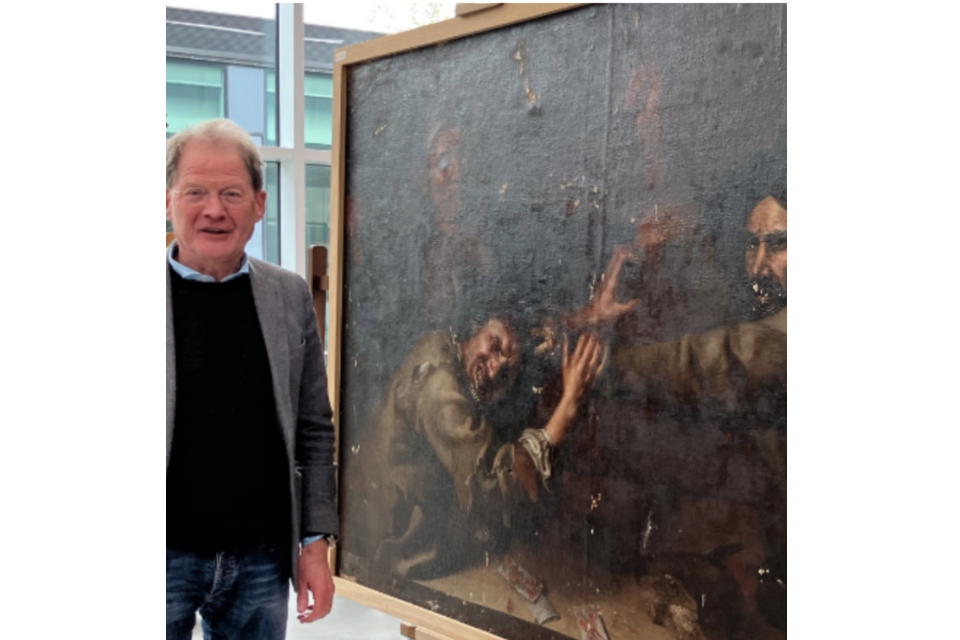
Chairman Toon van Mierlo next to the painting “Fighting card players” by an unknown artist (NK3533) during a working visit in the restoration workshop of the CollectieCentrum Nederland (Dutch National Collection Centre, CC NL).
New members and departing members of the Dutch Restitutions Committee
The State Secretary for Culture and Media has appointed Dr. Jeroen Euwe and Annemarie Marck as new Committee Members of the Dutch Restitutions Committee from the beginning of this year.
The new members replace the departing members: Dr. Claartje Wesselink and Dr. Jan van Kreveld. The Restitution Committee is grateful for their important contribution over the years.
Restitution Committee (RC) Members
- Professor Toon van Mierlo (Chair)
- Dick Oostinga (Vice-Chair)
- Dr Jaap Cohen
- Dr Saskia Cohen-Willner
- Professor Corjo Jansen
- Dr. Jeroen Euwe
- Annemarie Marck
Activities in the Netherlands concerning looted art
In 2024 various activities will take place in the Netherlands with regard to restitution and looted art.
International Symposium on ‘The Future of Restitution’
On 12 September 2024, the Cultural Heritage Agency of the Netherlands (RCE) is organising an international symposium on the future of WWII Restitution Policies, in the Netherlands and abroad. The symposium concludes a year in which the RCE commemorated the 25th anniversary of the Dutch Restitution Policy with various activities. Various contributors will look ahead: what does the future look like? Is an end date to WWII Restitution Policies conceivable? Or a supranational policy? What are opportunities and challenges in the field of provenance research? And how do we want to deal with orphaned art with a WWII background?
To register for the program and find out more information, visit the RCE website.
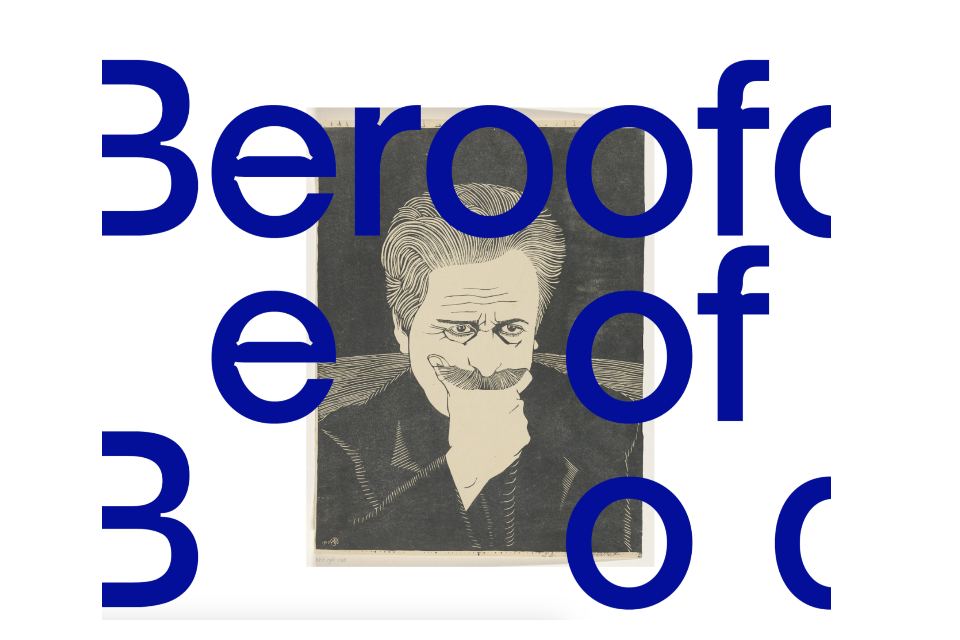
Related exhibition: Looted. Personal stories about the looting and restitution of Jewish cultural property.
Looted: An exhibition at two locations: Jewish Museum and National Holocaust Museum
What is it like when everything is taken from you? Not just your rights and freedom, but also your possessions? As of 31 May, a new exhibition opened; Looted in the National Holocaust Museum in Amsterdam and in the Jewish Museum. The dual exhibition Looted is about the loss of Jewish cultural property in the Netherlands. Eight personal stories make palpable what the theft of cultural assets means under inhumane conditions. Because objects are more than just material. They reflect your identity and have emotional significance.
Looted brings the audience into a world of children’s drawings, photos, ceremonial objects and books. First-hand documents and interviews convey the underlying narrative: the pain that victims continue to feel to this day. The exhibition, running from 31 May to 27 October 2024 at the Jewish Museum and the National Holocaust Museum in Amsterdam, is a co-production with the Rijksmuseum.
The exhibition is also accompanied by a podcast developed in collaboration with the NIOD Expert Centre Restitution, and a publication published by Rijksmuseum/Jewish Cultural Quarter.
For more information, visit the Looted exhibition website.
Looted Symposium on 9 and 10 September 2024
The Rijksmuseum Amsterdam ― in collaboration with the Arbeitskreis Provenienzforschung e.V. (International Professional Association for Provenance Research), the Jewish Cultural Quarter and Sotheby’s ― will organise a two-day symposium Looted/Beroofd on 9 and 10 September 2024.
The symposium will explore themes relating to the impact of loss and the shifting meaning of art, books and Jewish ritual objects when their context changes in and around the Second World War. These themes also feature prominently in the simultaneous exhibition (in collaboration with Rijksmuseum) at the Jewish Museum and National Holocaust Museum.
The symposium is part of the annual meeting by the Arbeitskreis Provenienzforschung that brings together almost 550 academics and experts that research the provenance of cultural assets from across the globe in Germany, Austria, Switzerland, the Netherlands, the USA, France, Great Britain, Israel and Italy who work in public/private institutions, the art trade, the legal system, and academic or freelance research.
For more information, visit the Rijksmuseum website.
News: United Kingdom
New Book: Nazi-era Provenance of Museum Collections: A research guide by Jacques Schuhmacher
Dr Jacques Schuhmacher, Senior Provenance Research Curator at the Victoria and Albert Museum, has written a research guide to support the ongoing efforts to research the provenance of museum collections with respect to the Nazi period. Nazi-Era Provenance of Museum Collections was published by University College London (UCL) Press on 24 May 2024.
Written in an accessible style, the book provides readers with the historical awareness, research methods, and resources that can be used to clarify the provenance of museum objects with respect to the years 1933 to 1945.
The first chapter offers a historical overview essential for undertaking this kind of provenance research, weaving together an account of the Nazis’ ever-escalating campaign of persecution and dispossession with the stories of their victims who were either forced to sell their artworks or had them outright confiscated.
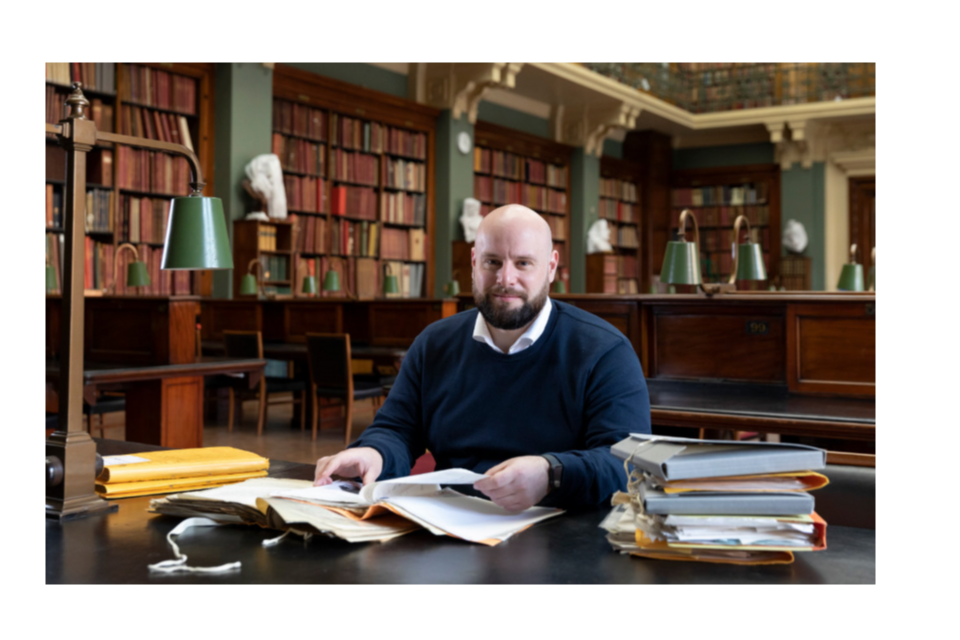
Dr Jacques Schuhmacher, Senior Provenance Research Curator at the Victoria and Albert Museum.
The second chapter explains why the Nazi-era provenance of museum collections remained largely unexamined despite the Allied post-war restitution efforts. It discusses how the 1998 Washington Conference on Holocaust-Era Assets galvanised research in this area, bringing the issue to the forefront of the art world. The chapter highlights the fact that this is a concern affecting all museums that made acquisitions after 1933 and in the ensuing decades, and it provides the context in which provenance research is conducted today.
The third chapter outlines the key research strategies for researching the Nazi-era provenance of museum collections, using case studies from a wide range of different museums to illustrate each step. The chapter explains how to approach a research project involving a potentially large number of objects, how to examine museum records and the objects themselves, how to use the specialist literature and online databases to expedite this research, and introduces readers to the key principles of archival research in this field. Each chapter concludes with a list of further relevant publications and resources.
Throughout, Schuhmacher highlights that the aim of this research is not simply to add a name and date to an object’s record for the sake of archival completeness. It serves to ensure that the Nazis’ worldview and their actions do not live on unchallenged in the galleries and storerooms of our museums today.
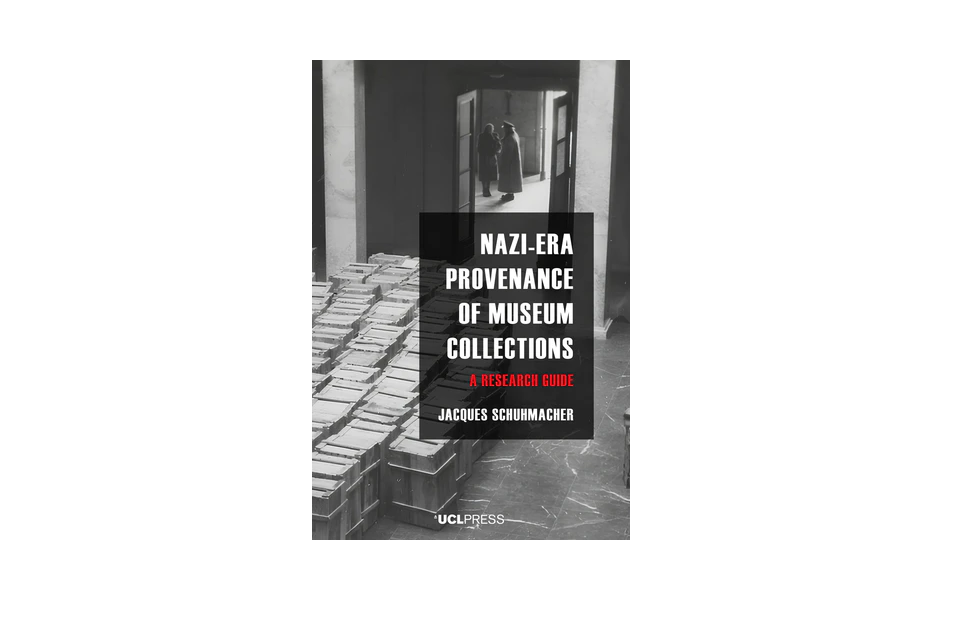
Book cover of Nazi-era Provenance of Museum Collections: A research guide by Jacques Schuhmacher.
Network of European Restitution Committees Spoliation Conference at the V&A
On Thursday 23 May 2024, hosted at the V&A Museum, London, the five European Restitution Committees on Nazi-Looted Art met to discuss the ongoing work of the network. This was followed by a public conference of a panel discussion by representatives of each committee led by Dr. Charlotte Woodhead, an Associate Professor at University of Warwick.
In light of the recently published ‘Best Practices for the Washington Conference Principles on Nazi-Confiscated Art’ the Spoliation Conference provided a timely opportunity to highlight the Best Practices and provide a forum for their discussion, focusing on the work of the European restitution committees.
The committees were encouraged to highlight similarities and differences in their approaches and to include specific case examples that illustrate their processes and challenges. References to the Best Practices were made to discuss potential future developments in the field of restitution.
Full details of the event, including a report of proceedings will appear in a special edition of the newsletter to be published in August 2024.
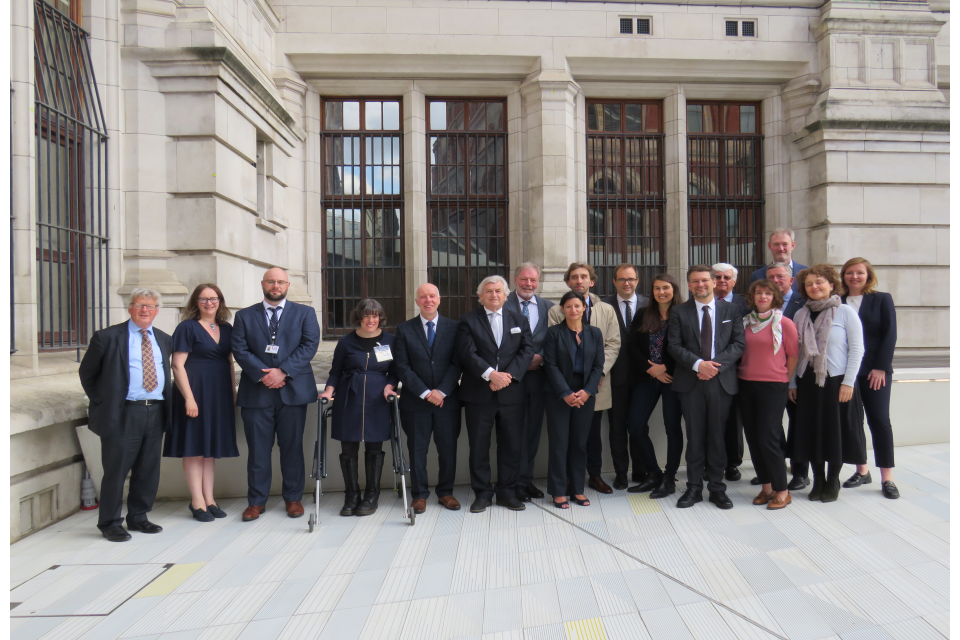
Representatives and officials from the five committees and conference speakers outside the V&A, London.
Report: Austria
Report on the last meetings of the Austrian Art Restitution Advisory Board
Since the publication of the last newsletter, the Austrian Art Restitution Advisory Board has held two sessions. At its 103rd meeting on 28 November, the Advisory Board issued recommendations on objects from the Albertina, the Österreichische Galerie Belvedere and the Austrian National Library.
In the case of two drawings from the Albertina, the Advisory Board established, on the basis of research by the Commission for Provenance Research, that they came from the private art collection of Heinrich Schwarz, an art historian and long-time curator of the Österreichische Galerie. Having been dismissed from his post shortly after the annexation of Austria to the National Socialist German Reich in 1938, he fled Austria in March 1939 and reached New York in February 1940. Although he was authorised to export his art collection, he parted with some pieces in order to finance his escape. At the auction held by the Leipzig auction house C.G. Boerner on 28 April 1939, the Albertina purchased the two drawings, which can be clearly attributed to Heinrich Schwarz on the basis of the collector’s stamp on the reverse. The Advisory Board considered these acquisitions to be null and void legal transactions and recommended the restitution of the sheets.
It also made the same judgment regarding the painting “Spring in Hacking” by Emil Jakob Schindler from the Österreichische Galerie Belvedere. Owned by the banker Wilhelm Zierer from 1901 at the latest, and subsequently by his daughter Lili Oppenheimer, it came into the possession of Maria Eberstaller after the “Anschluss”. She was the daughter of the painter – and Schindler pupil – Carl Moll, who was demonstrably familiar with the Zierer and Oppenheimer collections. In 1945, in view of the imminent end of the Nazi regime, she committed suicide together with her husband, the National Socialist Richard Eberstaller, and her father, and bequeathed the figurative painting to today’s Belvedere. Lili Oppenheimer and her family managed to flee Vienna in August 1938; the Advisory Board considered the transfer to Maria Eberstaller to be a void legal act and recommended the restitution of the painting.
A six-volume edition of Maxim Gorky’s “Selected Stories”, bearing the bookplate of Leopold and Lili Oppenheimer, was also recommended for restitution. These volumes were found among the confiscated holdings of the Austrian National Library, as were four incunabula and a total of 130 items from the Manuscripts and Old Prints Collection and the Music Collection. No sufficiently meaningful previous owner information was found for them, which is why the Advisory Board recommended that they be handed over to and utilised by the National Fund of the Republic of Austria for the Victims of National Socialism.
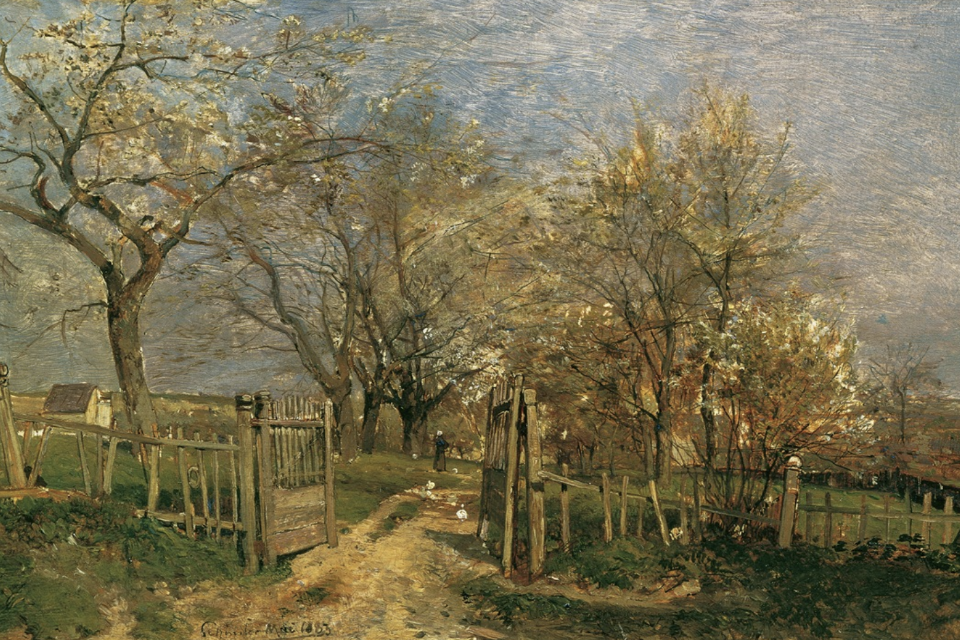
“Spring in Hacking” by Emil Jacob Schindler (1883). ©Österreichische Galerie Belvedere.
The situation was different in the case of a printed document bearing the collector’s stamp “Bibliothèque de Zuylen”. This led us to Hélène van Zuylen van Nyevelt de Haar from the French branch of the Rothschild family. After her extensive collection of artworks, furniture and especially books were “secured” by the “Einsatzstab Reichsleiter Rosenberg” at the beginning of 1941, her library was sent to Berlin in 81 crates to be incorporated into the “Central Library of the High School of the NSDAP”, which was still under construction. In the course of the air raids on Berlin, these holdings were evacuated to the – previously confiscated – Olivetan monastery in Tanzenberg in Carinthia, where British soldiers inspected them after the liberation to determine their origin. The van Zuylen stamp probably remained undiscovered, which is why the book ended up at the Austrian National Library via the so-called Büchersortierungsstelle (book sorting centre) in the Vienna Hofburg. It is now to be transferred to the heirs of Hélène van Zylen.
The 104th meeting of the Advisory Board on 12 March 2024 resulted in recommendations for objects from the MAK - Museum of Applied Arts, the Österreichische Galerie Belvedere and the Weltmuseum Wien.
A total of 24 objects (17 books, six ornamental engravings and one portrait) were inventoried as donations from Zerline Nirenstein from May 1938 in what was then the Staatliches Kunstgewerbemuseum. Although Zerline Nirenstein had donated pieces to the museum before, particularly in connection with the accidental death of her brother Martin in 1922, the Advisory Board saw the transfers after the “Anschluss” in connection with her relocation in an increasingly precarious situation for Jews in Vienna. Together with her brother Hugo, Zerline Nirenstein had to move to a “collective flat” in 1941, from where they were deported to the Theresienstadt ghetto in July 1942. While Hugo Nirenstein was murdered in Treblinka, Zerline Nirenstein died in Theresienstadt on 5 December 1942. The Advisory Board recommended that the 24 objects donated to today’s MAK be returned to Zerline’s legal successors.
The Advisory Board also recommended the return of the “Portrait of Mrs Barbara Meyer” by Johann Baptist Reiter from the Österreichische Galerie Belvedere. Its former owner, Robert Kauder, ran a stove-maker’s workshop in Vienna, which was placed under provisional administration in June 1938 and subsequently “aryanised”. Together with his wife Malvine, Robert Kauder was forced to move to a so-called “Jews’ quarter” in the summer of 1940; on 15 October 1941, they were deported to the Litzmannstadt ghetto in the Generalgouvernement (now Łódź/Poland), where they both died on an unknown date.
The Österreichische Galerie bought the “Portrait of Mrs Barbara Meyer” at auction from the Viennese auction house Adolf Weinmüller in March 1939. Shortly beforehand, Robert Kauder had stated that after the “Aryanisation” of his company, he “received nothing for his livelihood”. Accordingly the Advisory Board considered this acquisition to be a null and void legal transaction and recommended the transfer of ownership to the legal successors of Robert Kauder.
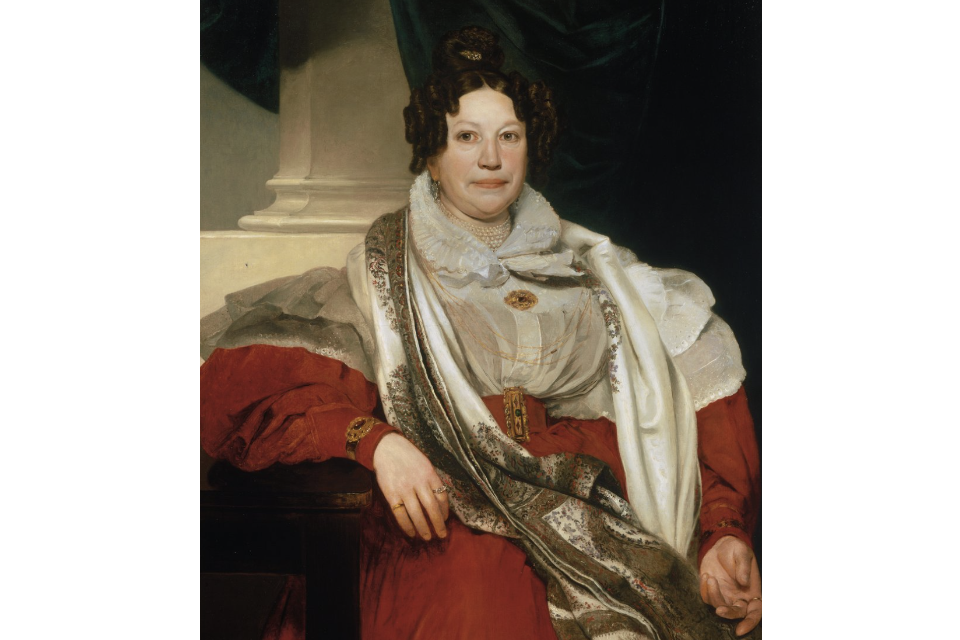
Portrait of Mrs Barbara Meyer by Johann Babt Reiter ©Österreichische Galerie Belvedere
Based on submissions from the Mosse Art Research Initiative (MARI) and the representation of the legal successors of Rudolf and Felicia Mosse, the provenance of a relief panel depicting a hornblower from the Kingdom of Benin (now part of Nigeria), which is located in the Weltmuseum Wien, was investigated by the Commission for Provenance Research. The former owner was Friedrich Wolff-Knize (Frederic Knize from 1941), whose art collection was seized as a result of Nazi persecution, and restituted in 1947; the “Hornblower” was returned to what was then called the Ethnological Museum in 1959 through a sale carried out by Frederic Knize’s son. As both (Lachmann-)Mosse and Wolff-Knize are claimed to be the (previous) provenance of the bronze plate in question, the Advisory Board also investigated a possible transfer of ownership to the legal successors of Felicia and Hans Lachmann-Mosse. The Berlin-based family was persecuted as Jewish under National Socialism; in May 1934, Rudolf Mosse’s art collection was put up for forced auction by the Rudolph Lepke auction house directly at Palais Mosse on Leipziger Platz in Berlin. A “Flute Player” is also listed in the corresponding catalogue; based on a comparison of the dimensions, which differ significantly, the Advisory Board assumed that it is almost certainly not the plate in question in the Weltmuseum Wien and did not recommend its return.
The resolutions can be found on the website of the Commission for Provenance Research and are also translated into English on an ongoing basis.
The last meeting of the Art Restitution Advisory Board took place on the historic date of 12 March. This day commemorates the annexation of Austria to the National Socialist German Reich in 1938 and its catastrophic consequences, particularly for the Jewish population.
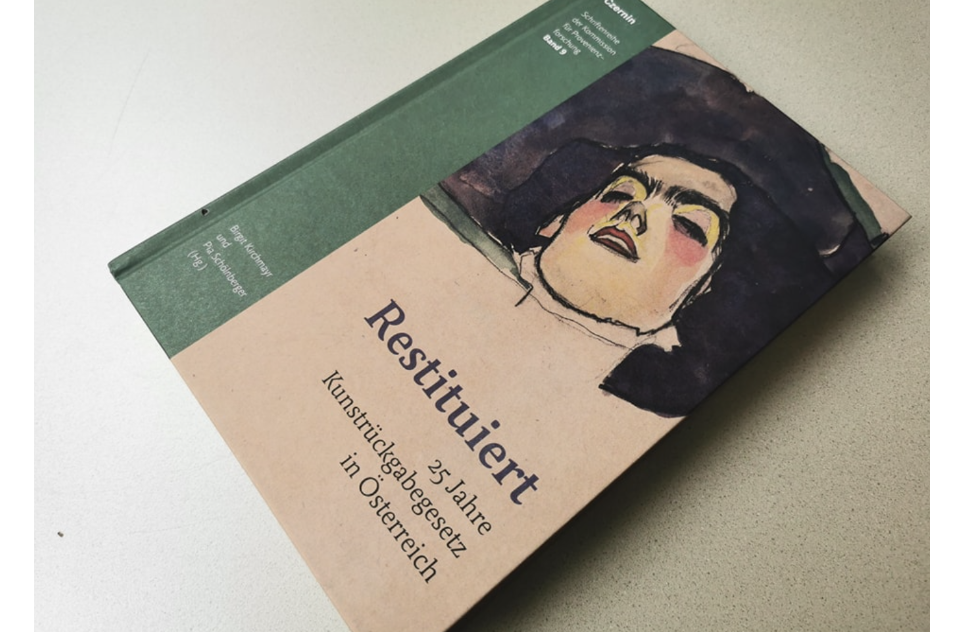
The ninth volume of the commission's publication series entitled “Restituiert” ©BMKÖS/HBF/Pusch
The Republic of Austria has been doing exemplary work in the field of art restitution for a quarter of a century now: Thousands of objects have been restituted from federal collections since the Art Restitution Act came into force in December 1998. The 104th meeting of the Advisory Board shows that the ongoing work of the Commission for Provenance Research continues to bring to light numerous works seized as a result of Nazi persecution and the associated biographies of persecution. The Commission’s work continues, as does Austria’s commitment to take on this task.
The Art Restitution Act came into force on 5 December 1998. To mark its 25th anniversary, the anthology “Restituted. 25 Years of Art Restitution Law in Austria”, edited by Birgit Kirchmayr and Pia Schölnberger, was published by Czernin Publishing House with numerous contributions and case studies.
Find out more information on the Czernin Publishing House website.
Pia Schölnberger. Director of the Commission for Provenance Research and head of the office of the Austrian Art Restitution Advisory Board at the Federal Ministry of Art, Culture, the Civil Service and Sport.
Case study: United Kingdom
Paintings attributed to Sir Peter Paul Rubens, in the possession of the Courtauld Institute of Art.
The report also considered a claim by Mr. Gal Flörsheim as sole heir of Salomon Jakob Flörsheim who was one of the main shareholders of the Bank. Mr Flörsheim also claimed as a recently appointed liquidator of the Bank with his co-liquidator, Mr Dolov.
Following the liquidation of the Bank, the three paintings were sold to Count Anthony Seilern. After the war he brought them to England and made a bequest of them to the Courtauld, in whose possession they remain.
In its consideration, the Panel expressed doubt as to the standing of heirs of shareholders to bring a claim, given that (under both Dutch and English law) the paintings were owned by the Bank, not the shareholders. The Panel also observed that this distinction illustrated a fundamental aspect of restitution, in the context of the Washington Principles on Nazi-Confiscated Art, that it is designed to acknowledge the effect of the loss of works of art on those who suffered persecution by the Nazi regime. It is not intended to provide compensation for shareholders of a bank, which suffered financial loss on the disposal of its assets, even where that disposal took place under the pressure of imminent Nazi control. Furthermore, shares are not cultural objects.
The Panel noted that the paintings served as security for loans made to Franz Koenigs by the Bank and by early 1940 he had failed to discharge the loan. The Bank had only come into possession of the paintings as a result of calling in the loan and realising its security. The Bank recovered its loans and so neither the shareholders nor the Bank suffered any loss.
The Panel also saw no reason to conclude that the sale of the three paintings was a forced sale or a sale at under-value, as the claimants contend. There is an important distinction between a forced sale in consequence of specific action and a liquidation of assets under pressure from the circumstances which prevailed at the time.
Finally, the Panel considered it relevant to the moral strength of the claim (as it had in its 2007 report) that in 1939 and 1940 Koenigs had been negotiating a part sale and part donation of his collection to the museum in which they were being held on long-term loan, demonstrating that he had not intended to leave his drawings or paintings to his heirs but wanted them to remain in a museum.
The Panel’s conclusion, therefore, was that the claimants have neither a legal nor a moral claim to the three paintings.
Read the Panel’s full report dated 18 March 2024.
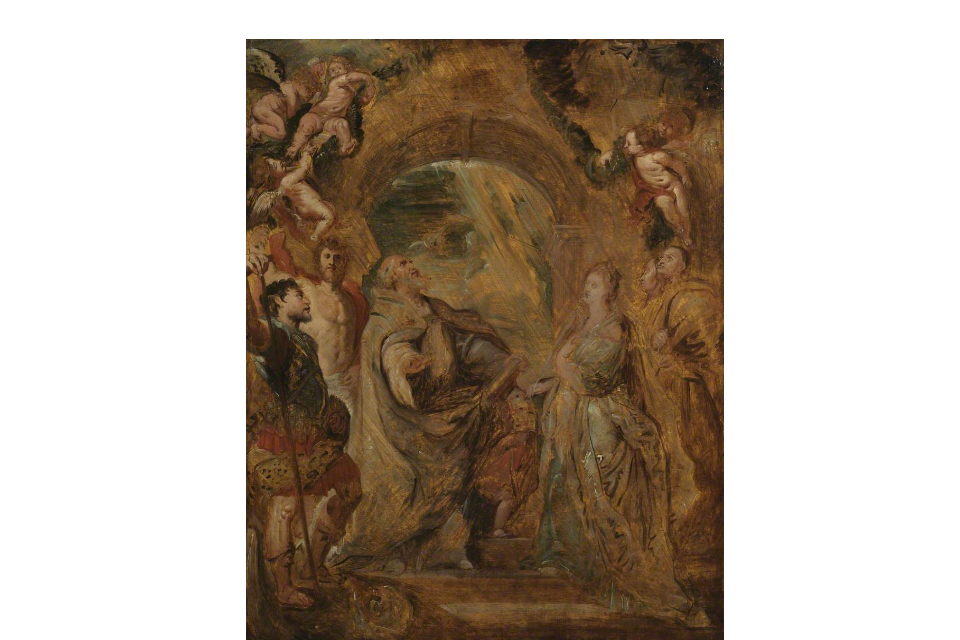
St Gregory the Great with Ss Maurus and Papanius and St. Domitilla with Ss Nereus & Achillaeus (1606-1607), Rubens.
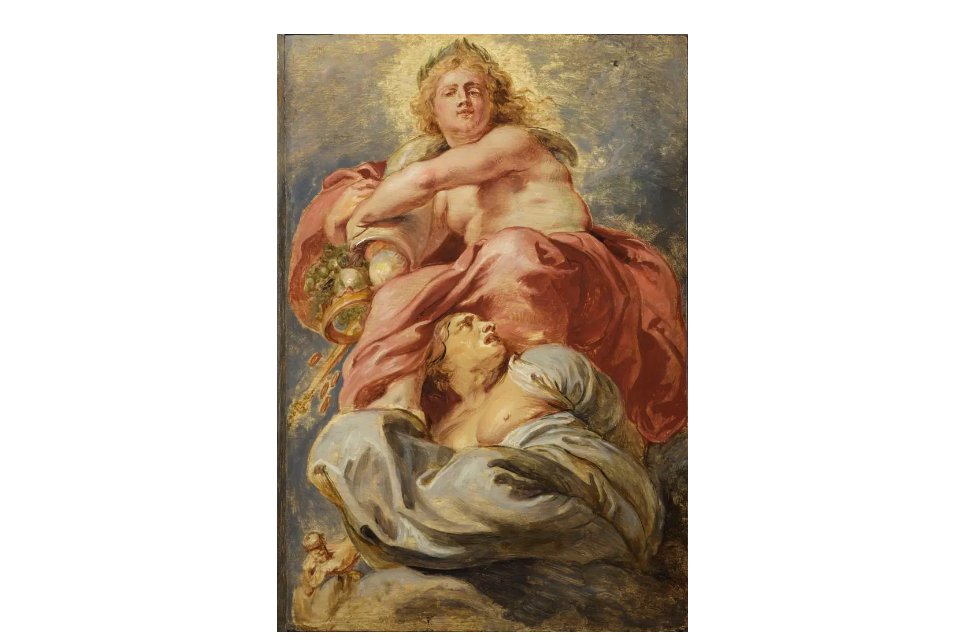
The Bounty of James 1 Triumphing Over Avarice, for the ceiling in the Banqueting House, Whitehall c.1632, Rubens.
Case study: Austria
Restitution of 60 objects from the Siegfried Fuchs Collection by the Museum of Military History/Military History Institute Vienna
On 26 September 2023, the Museum of Military History/Military History Institute Vienna was able to restitute 60 objects, including prints, sheet music, books and oil paintings, to the heirs of the lawyer Dr. Siegfried Fuchs.
In the presence of the director of the museum, Georg Hoffmann, and the head of the Commission for Provenance Research, Pia Schölnberger, as well as museum employees from the concerned collection departments, the restoration staff and the provenance research, the set of items consisting mainly of works of art with military subjects, was handed over. This was preceded by the restitution recommendation of the Art Restitution Advisory Board on 29 June 2021, based on the results of the provenance research of the Museums of Military History.
With this last handover of objects from Siegfried Fuchs’ collection for the time being, the Museum of Military History thus joined five other Austrian museums that had already examined their objects from the Siegfried Fuchs Collection since 2002. In all these cases the Vienna Restitution Commission and the Art Restitution Advisory Board had each issued restitution recommendations.
Siegfried Fuchs and his collection
Born on 26 December 1883, the Viennese lawyer Siegfried Fuchs had amassed a diverse and large cultural-historical collection of books, art objects, buttons, sticks and historical sheets of music in 40 years of collecting, which, by his own account, he had either bought for small amounts or received as gifts. After the annexation of Austria by Nazi Germany in March 1938, Siegfried Fuchs was subjected to persecution by the Nazi regime as a Jew. He had to submit a declaration of assets and in September 1938 he was deprived of his economic livelihood when the 5th Ordinance to the “Reich Citizenship Act” prohibited Jews from working as lawyers. He was now forced to sell his collection to finance his living expenses and prepare for his escape. His financial hardship was exacerbated by the so-called “Jewish property levy” that was imposed in November 1938.
From October 1938, Fuchs made his first sales to the Austrian Museum of Folk Life and Folk Art, the Kunsthistorisches Museum and, in 1939, to the Municipal Collections of Vienna. By July 1939, the value of his collection had therefore already fallen to less than half the amount stated the previous year. Despite the purchases that had already been made, the Municipal Collections of Vienna attempted to have the Monument Protection Authority seize and deposit the collection in its own sphere of influence, but failed. However, the Monument Protection Authority subsequently took on the role of a hub to broker acquisitions from the Fuchs Collection for other Viennese museums. This resulted in purchases by the National Library and today’s Museum of Applied Arts.
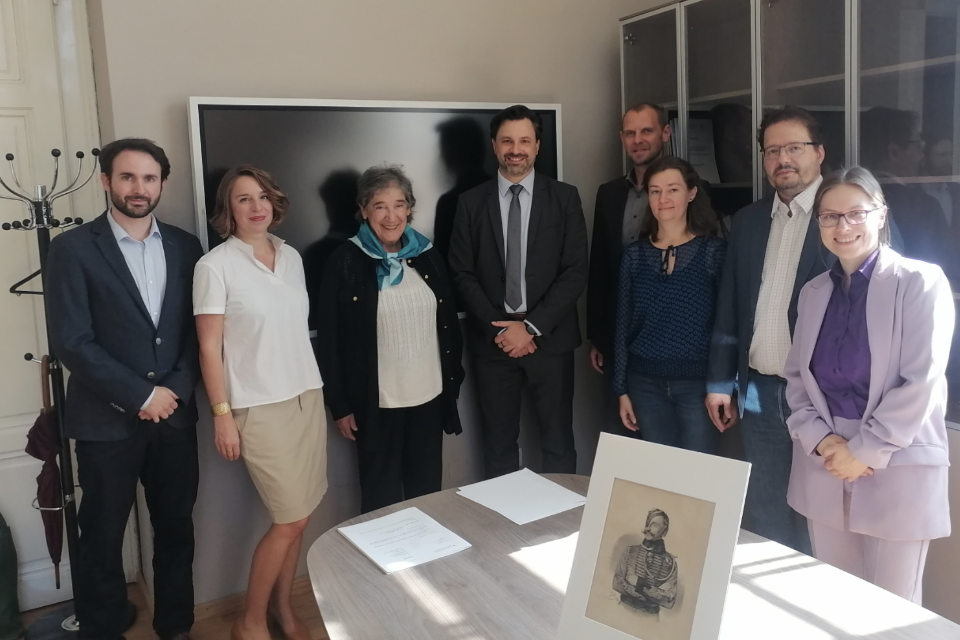
(from left to right): Stefan Kurz (provenance researcher), Pia Schölnberger (Director of the Commission for Provenance Research), Silvia Tudiwer (representative of the heirs) Georg Hoffmann (Director of the Museum of Military History), Erik Gornik (head of the library of the museum), Anna-Elisabeth Weinberger (conservator for graphic works), Walter Albrecht, (curator of the art collection of the museum), Stephanie Pracherstorfer, (administrative head of the museum). In the foreground one of the restituted objects: Lithography with a portrait of General Franz Schlik zu Bassano und Weißkirchen (1789 to 1862) by Franz Eybl.
Fuchs had already announced his intention to flee from Vienna in December 1939. However, it was not until 14 June 1940 that he received an export permit for the majority of the remains of his collection, in which no museum had shown any interest until then. Nevertheless, even after the export permit was extended, purchases were made by the National Library, the Municipal Collections of Vienna and the Army Museum (today’s Museum of Military History). In August 1940, the latter had been made aware of objects from the Fuchs Collection by the Monument Protection Authority. After making contact in September 1940, the Army Museum finally purchased 74 objects at the end of October 1940. At this point, Siegfried Fuchs was already on the verge of fleeing. At this late stage, one year after the start of the war, there were only a few escape routes and destinations left for Jews to leave the German Reich. After transferring considerable sums to the “Committee for the Assistance of European Refugees in Shanghai”, Fuchs managed to travel to the Soviet Union on 3 December 1940 and then to reach Shanghai by land and a Japanese ship. He died there on 25 July 1946.
Of his three sisters, only Eugenie Wehle survived the Shoah. The rightful heirs after Siegfried Fuchs, to whom the 1940 acquisitions were restituted from Austrian museums from the year 2002 onwards, are the grandchildren of Eugenie Wehle and her sister Bertha Klein, who was murdered in 1941. They now live in France and Australia.
Stefan Kurz is a historian and provenance researcher (since 2020) at the Museum of Military History/Military History Institute Vienna
Case study: Austria
Restitution to the heirs of Adalbert Parlagi
In February 2021, an enquiry from the Commission for Looted Art in Europe to the Albertina drew attention to the provenance of the chalk drawing by Franz Seraph von Lenbach depicting Richard Wagner.
The Albertina, which had acquired the artwork in 1982 through the Urbach Gallery in Vienna, had no further information on the provenance of the work until then. However, the former owner has now turned out to be the Budapest-born merchant Adalbert Bela Parlagi (1895 to 1981).
The documents provided by the Commission for Looted Art in Europe revealed that the sheet was confiscated by the Gestapo at the beginning of November 1940 as part of the Parlagi family’s removal goods which were stored in the warehouse of the Viennese forwarding agent Josef Zdenko Dworak (1900 to 1967) and auctioned off the following year at the Dorotheum’s 466th art auction from 17 to 20 June 1941.
Adalbert Parlagi had been registered in Vienna since 1913. In December 1919, he married Hilda, née Hock, born in Prague on 2 April 1895. The couple had two children: Hedwig Elisabeth (born in 1923) and Franz Richard (born in 1926). The family lived at Türkenstraße 25 in Vienna’s ninth district from September 1920 to May 1936 and subsequently in the third district of Vienna, at Am Modenapark 10/6. In December 1938, the Parlagi family was considered to have de-registered to “Lausanne, Switzerland”. According to the registration documents, Adalbert Parlagi was a Hungarian citizen of the Mosaic faith until 1936, after which he was recorded as an Austrian citizen, Protestant A. B. (A.B. = Augsburg Confession). However, he and his wife had already left the Jewish Community of Vienna on 3 October 1923. The two children were christened as Protestants in October 1923 and October 1926.
After the annexation of Austria to the German Reich, the Parlagi family was considered Jewish according to the National Socialist Nuremberg Laws and had to leave Austria due to persecution by the Nazi regime. In December 1938, the family managed to emigrate to London, where Adalbert Parlagi had worked as a financial adviser at the Prudential Assurance Co. and therefore already had a residence.
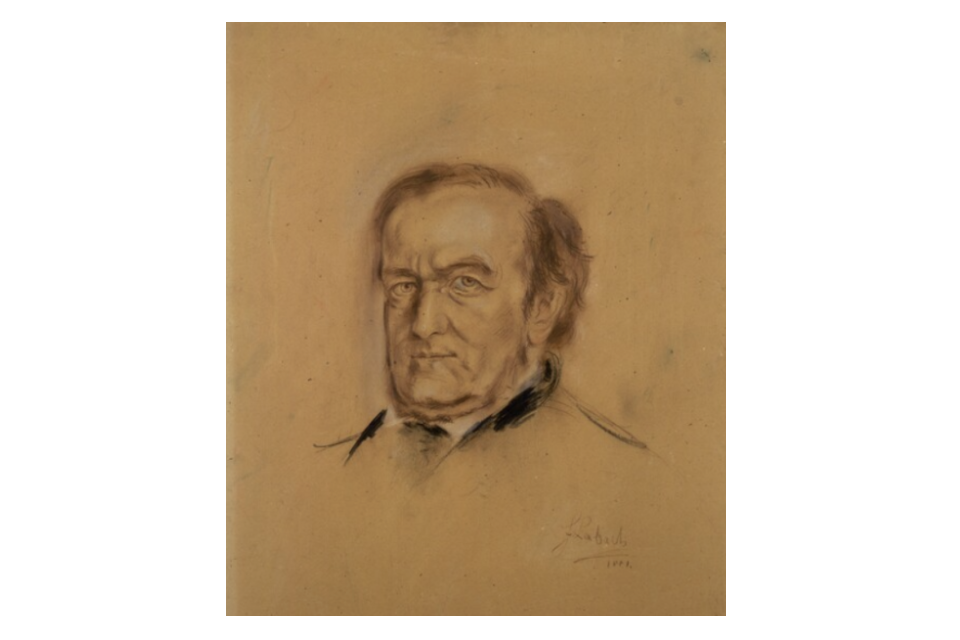
Franz Seraph von Lenbach (1836 to 1904), Richard Wagner, 1881. ©The Albertina Museum, Vienna
The entire household furnishings, including the works of art, were stored with the Zdenko Dworak transport company in Vienna’s eighteenth district. But instead of leaving Vienna, the removal goods were confiscated by the Gestapo at the end of 1940. Because the removal goods hadn’t arrived in London, Parlagi contacted the Dworak transport company on 6 February 1946. According to the notification to the Federal Ministry for Securing Property and Economic Planning, Dworak informed Parlagi in April 1946 that his removal goods had been handed over to the Dorotheum following their confiscation on 8 April 1941. In June 1947, Parlagi informed the Federal Monuments Authority in Vienna of the confiscation of his home furnishings and their sale via the Dorotheum during the Nazi era. Among the works of art, Parlagi also listed the portrait study of Richard Wagner dated 1881: “Lenbach, Richard Wagner portrait (chalk) approx. 50 x 70 cm”. At the request of the Federal Monuments Authority, the Dorotheum submitted a copy of the items Parlagi had put up for auction together with the names of the respective buyers.
The Richard Wagner portrait was transferred into private ownership in Vienna for RM 2,600, to the film director and screenwriter Ernst Marischka (1893 to 1963). However, Parlagi’s efforts to recover the drawing directly from the new owner failed, as the latter was only prepared to sell the drawing at the current estimated price, which Parlagi apparently did not agree to. The sheet thus remained the property of the Marischka family until it was auctioned off at the 607th Dorotheum Art Auction from 11 to 14 March 1975 and ultimately entered the Albertina’s collection via the Urbach Gallery in Vienna in 1982.
At its meeting on 30 March 2022, the Art Restitution Advisory Board recommended the return of the chalk portrait of Richard Wagner created by Franz Lenbach. The drawing was finally handed over to the rightful heirs of Adalbert Parlagi by the Austrian Ambassador in London at the beginning of March 2024.
Julia Eßl. Provenance researcher at the Albertina Museum on behalf of the Commission for Provenance Research.
The Museum of Military History in Vienna restitutes 560 objects from the Saul Juer collection
On 27 March 2024, the Heeresgeschichtliches Museum/ Militärhistorisches Institut (HGM/MHI) in Vienna had the pleasant opportunity to restitute 560 objects from the Saul Juer Collection to the two rightful heirs. These were mainly lithographs, copperplate engravings and other prints, as well as four oil paintings, a book and eleven ceramic figurines.
This was a special restitution for the HGM as it allowed for a particularly intensive exchange with one of Saul Juer’s grandchildren, who took over the objects as the heirs’ authorised representative. He attended the restitution ceremony together with his family, which made it a special event. They were all particularly interested and moved by the results of the provenance research on Saul Juer, especially as the restitution enabled them to come to terms with their own family history.
Saul Juer and his collection
Born in Dobrzany in Galicia on 2 June 1877, Saul Juer lived in Vienna from 1885. He was the owner of a meat trading business that was based on a market stall in the market hall in Vienna’s 3rd district. According to his own account, his collection consisted of “pictures”, ceramics, Judaica, drawings and engravings, which he had collected over the course of 30 years.
After the National Socialists came to power in March 1938, Juer was persecuted as a Jew. As early as the beginning of April 1938, he was deprived of his market stand. As a result, his company had to cease operations. In order to be able to meet the claims of his creditors, Juer intended to sell his art collection, as he told the authorities on 13 July 1938. In August 1938, he finally approached what was then called the Heeresmuseum (Army Museum) with an offer to sell works of art with a military connection. The responsible art historian at the Heeresmuseum was impressed by the quality of the collection, but at the museum’s request the purchase was to be made via the art dealer Blasius Fornach. However, the acquisition of 571 objects was not completed until January 1940. In June 1941, Saul Juer brought to the museum another oil painting depicting a military official created by an unknown artist. It remained in the museum without being purchased and was added to the museum inventory as a “find” in 1944.
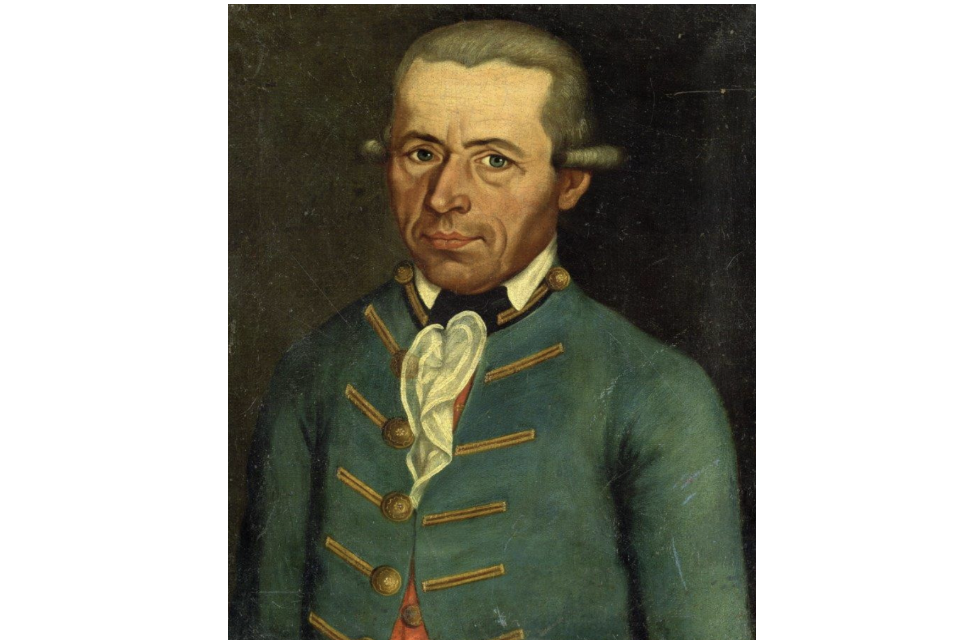
One of the restituted objects: oil painting by an anonymous artist, "Portrait unbekannter Militärbeamter im Generalsrang", undated. (©HGM/MHI/Inv. No. 1944/15/BI27192)
Based on the description of the collection given by Juer himself, which does not indicate any military references, it can be assumed that parts of the Juer collection were also sold to other institutions and dealers. This is supported by the fact that, while Juer was a member of the Association of Friends of Asian Art and Culture in Vienna, there were no objects relating to Asia in the collection taken over by the Army Museum. In any case, it is known that Saul Juer sold several paintings and ceramics to the art dealer Friedrich Welz in March 1941 and had already handed over gold and silver objects to the Dorotheum in November 1939 in accordance with §14 of the “Ordinance on the Use of Jewish Property”.
After the death of his wife Helene, Saul Juer had to move into a collective apartment in Vienna’s 2nd district in December 1941. On 14 July 1942, he was deported to Theresienstadt. From there, he was taken to the Auschwitz concentration camp on 15 May 1944. Nothing is known about his later fate, but it is to be assumed that he was killed there. Saul Juer was declared dead on 6 July 1949. One of his two daughters had already managed to escape to the USA via France and Morocco in September 1938, while the other was able to flee to Great Britain in August 1939. On 29 November 2022, based on the findings of the HGM’s provenance research, the Austrian Art Restitution Advisory Board issued a recommendation for the return of the objects from the Juer Collection. This was the first recommendation for the return of objects from the Juer Collection to date.
Stefan Kurz. A historian and provenance researcher (since 2020) at the Museum of Military History/Military History Institute Vienna.
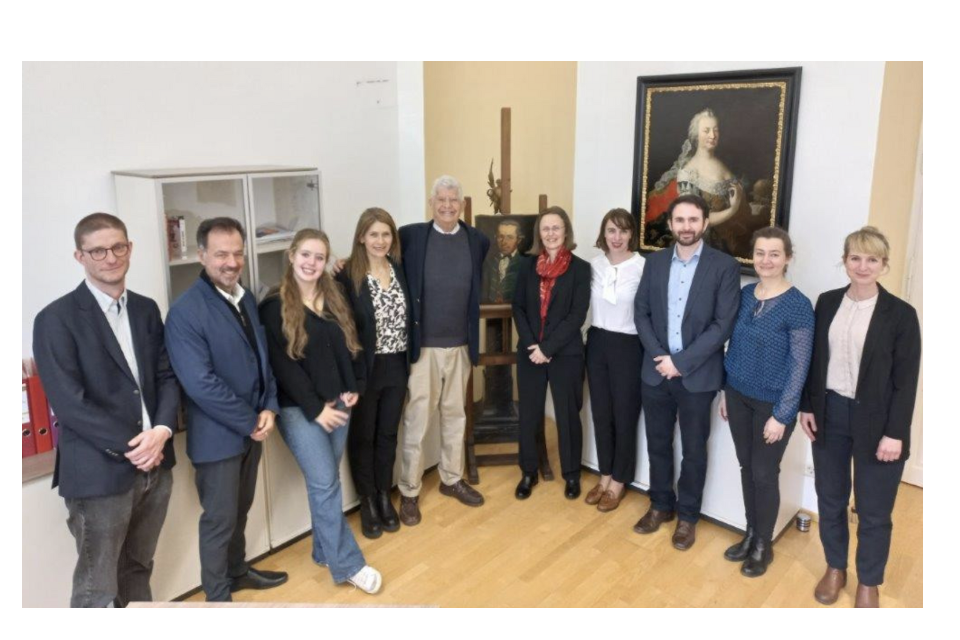
From left to right: Mathias Lichtenwagner (heir-researcher, Jewish Community Vienna), Saul Juer's grandson with his family, Claudia Reichl-Ham (deputy head of the research departement, HGM/MHI), Pia Schölnberger (head of the Austrian Commission for Provenance Research), Stefan Kurz (provenance researcher, HGM/MHI), Anna-Elisabeth Weinberger (conservator HGM/MHI), Christiana Rieder (conservator, HGM/MHI) (©HGM/MHI/Mara Radovanovic)
Imprint
The Newsletter is published by the Spoliation Advisory Panel, UK.
©2024 by the Network of European Restitution Committees on Nazi-Looted Art.
All rights reserved. No part of this publication may be reproduced, distributed, or transmitted in any form or by any means, including photocopying, recording, or other electronic or mechanical methods, without the prior written permission of the publisher, except in the case of brief quotations embodied in critical reviews and certain other noncommercial uses permitted by copyright law.
